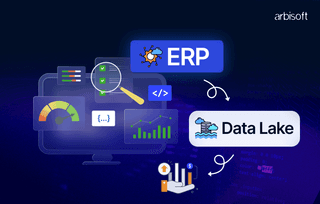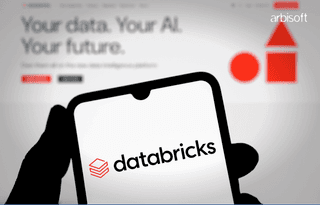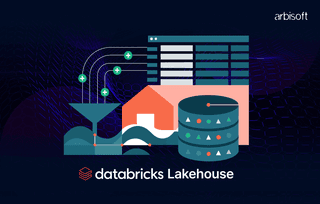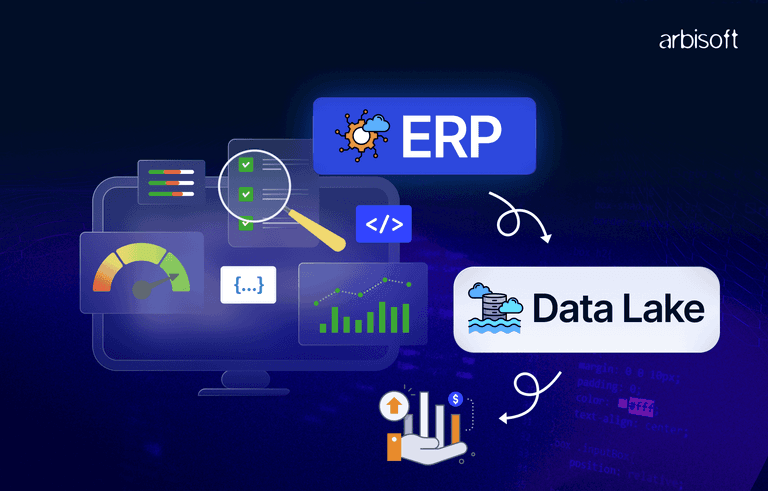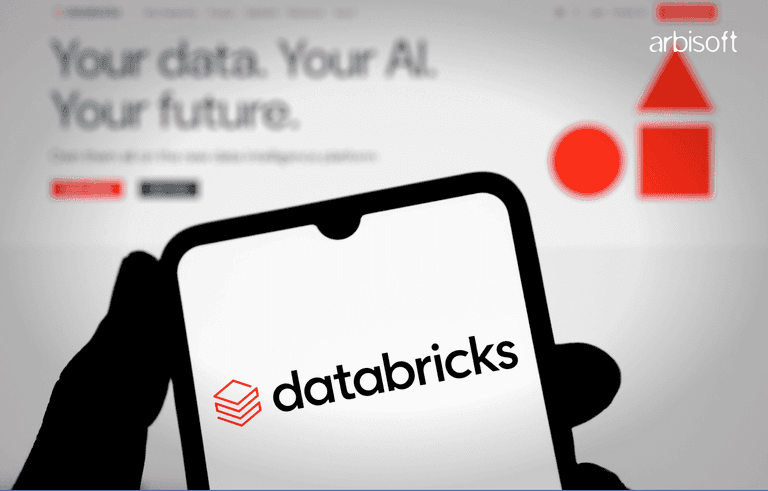We put excellence, value and quality above all - and it shows




A Technology Partnership That Goes Beyond Code

“Arbisoft has been my most trusted technology partner for now over 15 years. Arbisoft has very unique methods of recruiting and training, and the results demonstrate that. They have great teams, great positive attitudes and great communication.”
AI Ethics: Building Responsible and Fair Machine Learning Models

Hey there, AI enthusiasts! Ready to embark on a wild ride through the world of responsible AI? Buckle up, 'cause we're about to get real about the nitty-gritty of ethical machine learning. No dramatic "AI is gonna kill us all" nonsense here – we're talking about the everyday challenges that can make or break your AI systems.
The Elephant in the Machine Learning Room
So, here's the deal: AI bias isn't just some abstract concept – it's a real problem that's messing with people's lives right now. Remember that ProPublica bombshell about car insurance prices in Illinois? Yeah, turns out some zip codes (surprise, surprise – often minority neighborhoods) were getting slapped with higher premiums for the same coverage. Talk about a digital kick in the teeth!
But here's the kicker: this isn't just about a few rogue algorithms gone wild. It's about the systemic issues baked into our data, our society, and yeah, even our own biases as developers. We've got to face the music: our AI systems are often holding up a mirror to society, and sometimes that reflection is as ugly as sin.
Peeling Back the Layers of AI Bias
Now, let's get our hands dirty and dig into the roots of this mess:
1. Data Disparities: It's not just about big data – it's about representative data. Imagine training a medical AI on data that's 90% from one demographic. Congrats, you've just created a system that might misdiagnose everyone else!
2. Algorithmic Amplification: Sometimes, our algorithms are like that friend who always manages to make a bad situation worse. They take small biases in data and crank them up to 11.
3. Proxy Variables: This is the sneaky one. You think you're being fair by not using race or gender, but then your AI starts using zip codes or names as proxies. It's like playing whack-a-mole with bias!
4. Feedback Loops: Picture this: your AI makes slightly biased decisions, which influence real-world behaviors, which then feed back into your data... It's the circle of bias, and it ain't no Lion King song.
Historical Hangover: Our data often reflects historical inequalities. Using it without critical thought is like trying to predict the future by only looking in the rearview mirror.
 Source: openai.com/index/evaluating-fairness-in-chatgpt
Source: openai.com/index/evaluating-fairness-in-chatgpt
The Responsible AI Toolkit: Your New Best Friend
Alright, enough doom and gloom. Let's talk solutions, and I mean real, nitty-gritty, roll-up-your-sleeves solutions. it's like a Swiss Army knife for ethical AI, but way cooler, and when integrated with ai and data science services, it unlocks even greater insights.
Error Analysis: Finding the Weak Spots
First up, we've got an error analysis. This bad boy helps you spot where your model's dropping the ball. For instance, exploring error analysis in GPT-like models can further enhance understanding of model weaknesses. This bad boy helps you spot where your model's dropping the ball. Here's the real deal:
def deep_dive_error_analysis(model, test_data, sensitive_features):
errors = model.predict(test_data) != test_data['target']
for feature in sensitive_features:
subgroup_errors = errors.groupby(test_data[feature]).mean()
print(f"Error rates by {feature}:")
print(subgroup_errors)
# Identify intersectional biases
intersectional_errors = errors.groupby([test_data[f] for f in sensitive_features]).mean()
print("Intersectional error rates:")
print(intersectional_errors)
This function doesn't just show you overall error rates – it breaks it down by sensitive features and even looks at intersectional biases. Because let's face it, bias doesn't happen in a vacuum.
Data Explorer: Your Data's Secret Diary
Next up, is the data explorer. This isn't your grandma's data visualization tool. It's like giving your dataset a full-body MRI:
def advanced_data_explorer(data, sensitive_features):
for feature in sensitive_features:
print(f"\nAnalyzing {feature}:")
# Distribution analysis
distribution = data[feature].value_counts(normalize=True)
print("Distribution:")
print(distribution)
# Correlation with target
correlation = data[feature].corr(data['target'])
print(f"Correlation with target: {correlation}")
# Intersectional analysis
for other_feature in sensitive_features:
if feature != other_feature:
cross_tab = pd.crosstab(data[feature], data[other_feature], normalize='all')
print(f"\nIntersection with {other_feature}:")
print(cross_tab)
This function doesn't just show you pretty charts. It digs deep into your data's distribution, correlations, and even intersectional representations. Because sometimes, the devil's in the data details.
Fairness Assessment: The Equality Enforcer
Now we're getting to the good stuff. Fairness assessment is like your AI's conscience:
def comprehensive_fairness_assessment(model, test_data, sensitive_features):
predictions = model.predict(test_data)
for feature in sensitive_features:
subgroups = test_data[feature].unique()
# Calculate various fairness metrics
demographic_parity = {group: np.mean(predictions[test_data[feature] == group]) for group in subgroups}
equal_opportunity = {group: np.mean(predictions[(test_data[feature] == group) & (test_data['target'] == 1)]) for group in subgroups}
print(f"\nFairness metrics for {feature}:")
print("Demographic Parity:")
print(demographic_parity)
print("Equal Opportunity:")
print(equal_opportunity)
# Statistical significance testing
from scipy.stats import chi2_contingency
contingency_table = pd.crosstab(test_data[feature], predictions)
chi2, p_value, _, _ = chi2_contingency(contingency_table)
print(f"Chi-square test p-value: {p_value}")
This isn't just about ticking boxes. We're talking demographic parity, equal opportunity, and even statistical significance testing. Because when it comes to fairness, close enough isn't good enough.
Model Interpretability: Peeking Under the Hood
Last but not least, let's make that black box a glass box:
from shap import TreeExplainer
def interpret_model_decisions(model, data_sample):
explainer = TreeExplainer(model)
shap_values = explainer.shap_values(data_sample)
print("Global feature importance:")
print(pd.DataFrame(shap_values).abs().mean().sort_values(ascending=False))
print("\nLocal explanation for a single prediction:")
single_explanation = pd.DataFrame(list(zip(data_sample.columns, shap_values[0])), columns=['feature', 'impact'])
print(single_explanation.sort_values('impact', key=abs, ascending=False))
This function uses SHAP values to explain both global feature importance and individual predictions, providing clarity that complements advanced deep learning solutions for complex models. It's like giving your model a truth serum – no more "I don't know why I made that decision" excuses!
The Road Ahead: From Awareness to Action
Alright, folks, we've covered a lot of ground. But here's the thing: knowing about these tools is just the first step. The real challenge? Integrating them into your workflow, making them a non-negotiable part of your AI development process.
Remember, responsible AI isn't a destination – it's a journey. It's about constantly questioning, continuously improving, and never settling for "good enough" when it comes to fairness and ethics.
So, here's your homework (yeah, sorry, there's homework):
- Audit your existing models using these tools. You might be surprised (or horrified) by what you find.
- Make responsible AI checks a mandatory part of your model deployment pipeline. No exceptions!
- Foster a culture of ethical AI in your team. It's not just the job of one person – it's everyone's responsibility.
- Stay updated on the latest in AI ethics research. This field is moving fast, and yesterday's solutions might be today's problems.
Look, I get it. This stuff is hard. It's complex, it's nuanced, and sometimes it feels like you're trying to nail jelly to a wall. But here's the thing: as AI practitioners, we have a responsibility. Our models are making decisions that affect real people's lives. We owe it to them – and to ourselves – to do better.
So let's roll up our sleeves, dive into that code, and make AI that doesn't just perform well, but does good. Because at the end of the day, that's what responsible AI is all about.
Now go forth and code ethically, my friends! The future of AI is in our hands, and it's up to us to make it a fair one.








